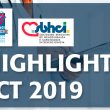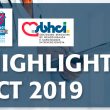Courtesy of SBHCI. This interesting study presented at TCT 2019 and simultaneously published in Am J Cardiol tells us PCI in stable coronary artery disease cannot lower risk in patients with severe aortic stenosis undergoing transcatheter aortic valve replacement (TAVR). Unless patients are symptomatic, most coronary artery lesions do not need revascularization according to researchers.<a href="https://solaci.org/en/2019/10/10/tct-2019-pci-in-stable-cad-prior-tavr-with-tavr-or-never/" title="Read more" >...</a>
TCT 2019 | FORZA: OCT vs FFR to Define Intermediate Lesions: Anatomy or Function?
Courtesy of SBHCI. Both fractional flow reserve (FFR) and optimal coherence tomography (OCT) can be useful to help define intermediate coronary lesions and optimize PCI outcomes. The FORZA study presented at San Francisco TCT 2019 scientific sessions simultaneously published in JACC randomized patients with intermediate lesions 1:1 to FFR vs OCT. For the FFR arm,<a href="https://solaci.org/en/2019/10/01/tct-2019-forza-oct-vs-ffr-to-define-intermediate-lesions-anatomy-or-function/" title="Read more" >...</a>
TCT 2019 | PARTNER 3: Obvious Short-Term Quality of Life Improvement, but What Happens Afterwards?
Courtesy of SBHCI. Patients with severe aortic stenosis and low surgical risk showed decreased mortality, stroke, and heart failure hospitalization at one year with transcatheter aortic valve replacement compared with surgery. Improved quality of life may seem an obvious consequence, but until now that was mere speculation. This work, presented at the TCT 2019 Scientific Sessions<a href="https://solaci.org/en/2019/10/01/tct-2019-partner-3-obvious-short-term-quality-of-life-improvement-but-what-happens-afterwards/" title="Read more" >...</a>
TCT 2019 | PARTNER 2A at 5 Years: In Intermediate-Risk Patients, TAVR Is Still Head-to-Head with Surgery
Courtesy of the SBHCI. The 2-year results of the PARTNER 2A trial showed that transcatheter aortic valve implantation has a result similar to that of surgery in patients with aortic stenosis and intermediate surgical risk. We lacked long-term data, both clinical and related to prosthesis function. Now, at TCT 2019, researchers presented the 5-year data for this<a href="https://solaci.org/en/2019/10/01/tct-2019-partner-2a-at-5-years-in-intermediate-risk-patients-tavr-is-still-head-to-head-with-surgery/" title="Read more" >...</a>
Very Encouraging Results for TAVR in Low-Risk Patients
Courtesy of Dr. Carlos Fava. About 12% of patients >75 years old have aortic stenosis. In 3%-4% of them, such disease is severe. Transcatheter aortic valve replacement (TAVR) has already proven to be beneficial for extreme-, high-, and intermediate-risk patients. Regarding low-risk patients, we currently have different analyses; two of them are randomized and their results are<a href="https://solaci.org/en/2019/09/30/very-encouraging-results-for-tavr-in-low-risk-patients/" title="Read more" >...</a>
TAVR in Bicuspid Has the Same Results in Surgery at Hospital Level
Courtesy of Dr. Carlos Fava. Bicuspid aortic stenosis patients (bicuspid AS) represent a small group and have not been included in the larger transcatheter aortic valve replacement (TAVR) studies, since they present different morphology and asymmetric calcification, which might come along with more paravalvular leak and less accurate positioning. Between 2012 and 2016, 475,315 patients<a href="https://solaci.org/en/2019/09/24/tavr-in-bicuspid-has-the-same-results-in-surgery-at-hospital-level/" title="Read more" >...</a>
The Most Read Articles of August in solaci website
1-FDA Expands TAVR Indication to Low-Risk Patients Both the self-expandable valve Evolut R and its direct competitor, balloon-expandable valve Sapien 3, received the authorization to be indicated for low-risk patients in a long-awaited announcement made on August 16th, 2019. Read also HERE 2-Mechanisms of Post PCI Persistent Angina Angina persistence or recurrence after PCI can<a href="https://solaci.org/en/2019/09/16/the-most-read-articles-of-august-in-solaci-website/" title="Read more" >...</a>
Physiological and Clinical Changes After Tricuspid Repair
After the recent announcement by the US Food and Drug Administration (FDA) green-lighting transcatheter aortic valve replacement (TAVR) in patients across the whole spectrum, and given the advancements regarding devices already in the market (such as MitraClip) and a variety of pulmonary valves, there is only one territory left to conquer: the long forgotten tricuspid<a href="https://solaci.org/en/2019/08/30/physiological-and-clinical-changes-after-tricuspid-repair/" title="Read more" >...</a>
Do NOACs Result in Any Benefit in TAVR?
Courtesy of Dr. Carlos Fava. The need for anticoagulation after transcatheter aortic valve replacement (TAVR) is over 15% according to different reports and, so far, no one has analyzed in depth whether new oral anticoagulant agents (non-vitamin K oral anticoagulants [NOACs]) result in superior benefit compared with classic vitamin K antagonists (VKAs). This study analyzed<a href="https://solaci.org/en/2019/08/23/do-noacs-result-in-any-benefit-in-tavr/" title="Read more" >...</a>
FDA Expands TAVR Indication to Low-Risk Patients
Both the self-expandable valve Evolut R and its direct competitor, balloon-expandable valve Sapien 3, received the authorization to be indicated for low-risk patients in a long-awaited announcement made on August 16th, 2019. The US Food and Drug Administration (FDA) has approved and expanded the indication for the Evolut series (Medtronic) and the Sapien 3 and<a href="https://solaci.org/en/2019/08/21/fda-expands-tavr-indication-to-low-risk-patients/" title="Read more" >...</a>







